

  |
Where to Install |
Before You Begin |
|
Install the Oracle iDataAgent software on all the nodes of Oracle RAC which satisfy the minimum requirements specified in the System Requirements. |
Download the latest software package to perform the install. Make sure that the computer in which you wish to install the software satisfies the System Requirements. |
| 1. | Log on to the client computer as Administrator or as a member of the Administrator group on that computer. | |||
| 2. | Run Setup.exe from the Software Installation
Package.
If you are installing on Windows Server Core editions, navigate to Software Installation Package through command line, and then run Setup.exe. |
|||
| 3. |
Select the required language. Click Next. |
 |
||
| 4. |
Select the option to install software on this computer.
|
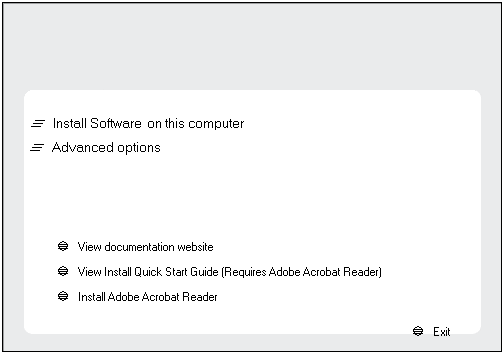 |
||
| 5. |
Select I accept the terms in the license agreement. Click Next. |
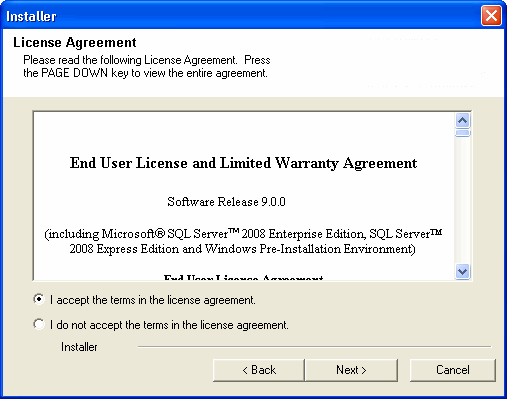 |
||
| 6. | Expand Client Modules | Backup and Recovery
| Database and then click Oracle
iDataAgent. Click Next. |
 |
||
| 7. |
If this computer and the CommServe is separated by a firewall, select the Configure
firewall services option and then click Next.
For firewall options and configuration instructions, see Firewall Configuration and continue with the installation. If firewall configuration is not required, click Next. |
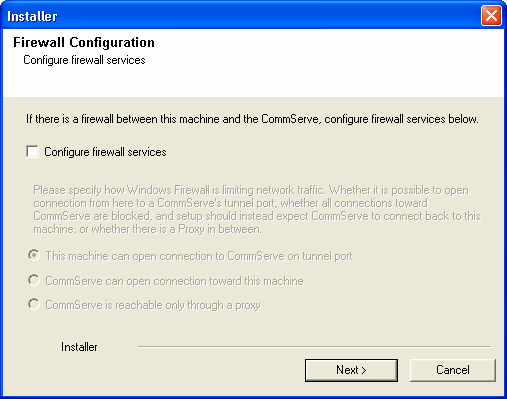 |
||
| 8. |
Enter the fully qualified domain name of the CommServe
Host Name. Click Next.
|
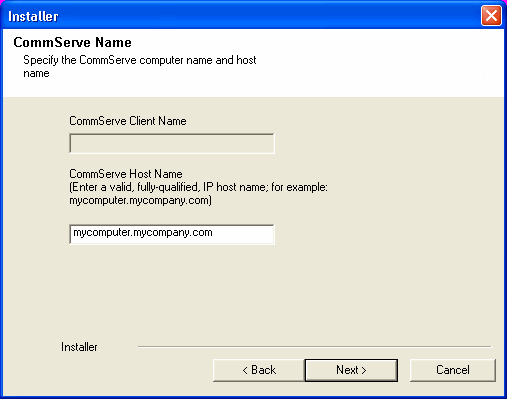 |
||
| 9. | Click Next. |
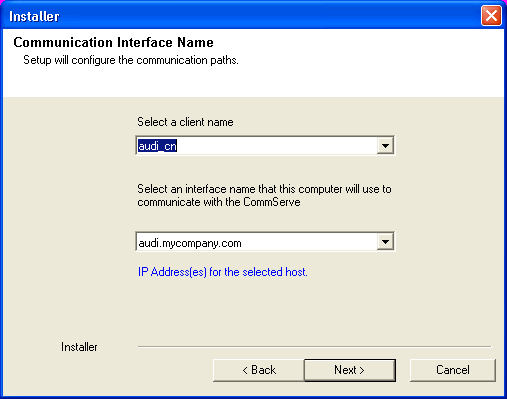 |
||
| 10. |
Select Add programs to the Windows Firewall Exclusion
List, to add CommCell programs and services to the Windows Firewall
Exclusion List. Click Next.
|
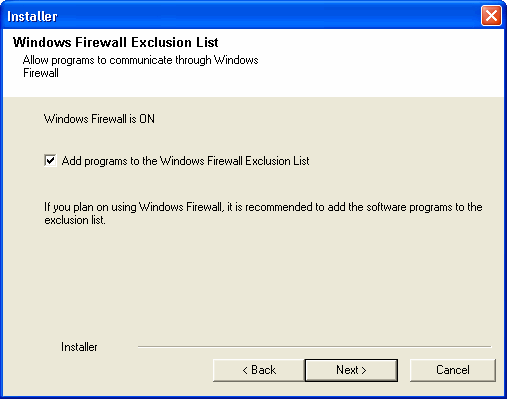 |
||
| 11. |
Verify the default location for software installation. Click Browse to change the default location. Click Next.
|
 |
||
| 12. |
Select a Client Group from the list. Click Next.
|
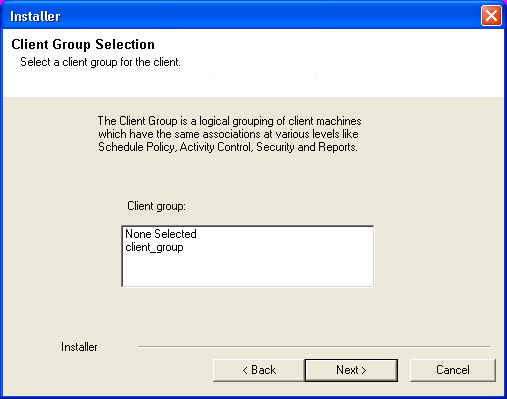 |
||
| 13. | Click Next. |
 |
||
| 14. | Click Next. |
 |
||
| 15. | Select a Storage Policy from the drop-down list. Click Next. |
 |
||
| If you do not have Storage Policy created, this message
will be displayed. Click OK.
|
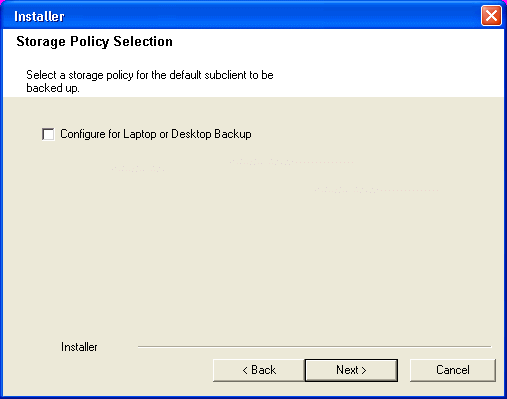 |
|||
| 16. | Click Next.
|
 |
||
| 17. | Click Next.
|
 |
||
| 18. | Click Next. |
 |
||
| 19. | Click OK. |
 |
||
| 20. | Click Next. |
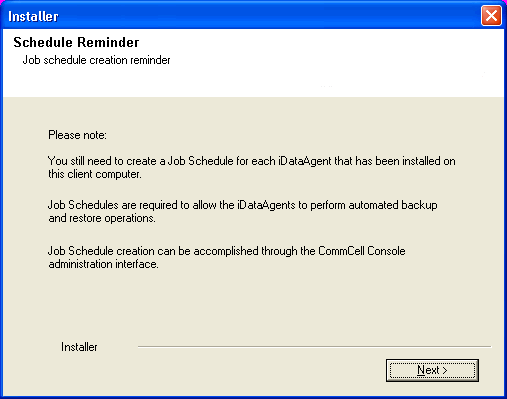 |
||
| 21. | Click Finish. |
 |
||
 |
If you already have a storage policy selected in
step 15, proceed to the
Configuration section. If you do not have Storage Policy created, continue with the following step. |
|||
| 22. | Create a Storage Policy:
|
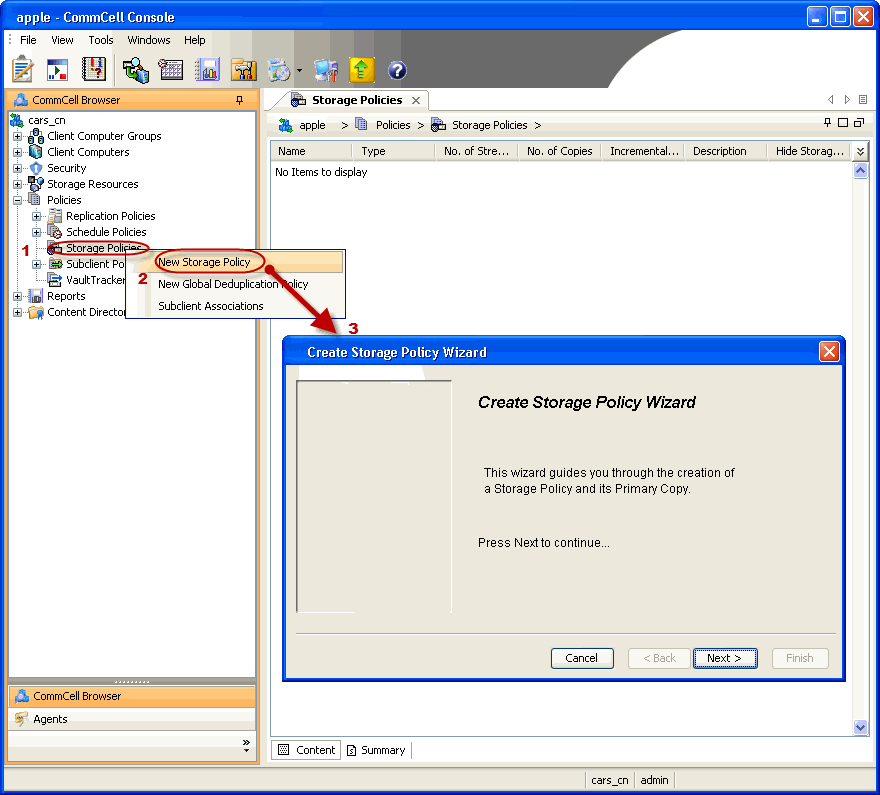 |
  |